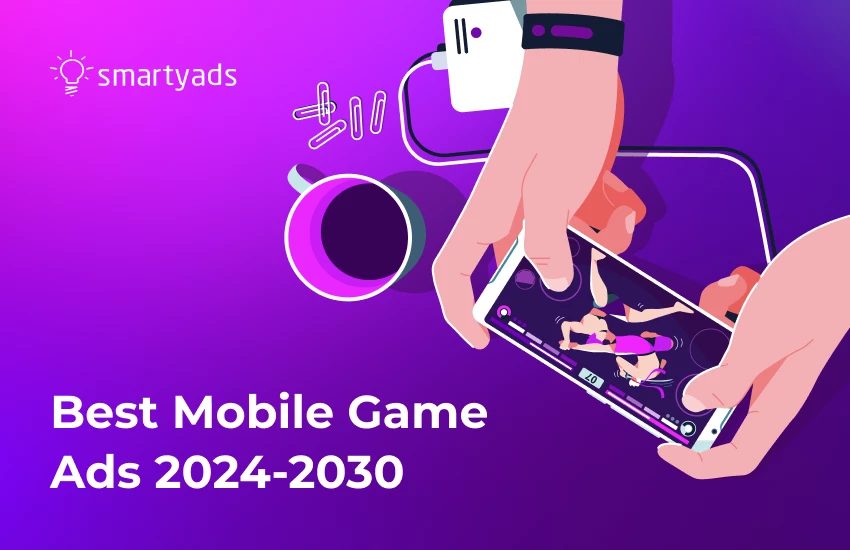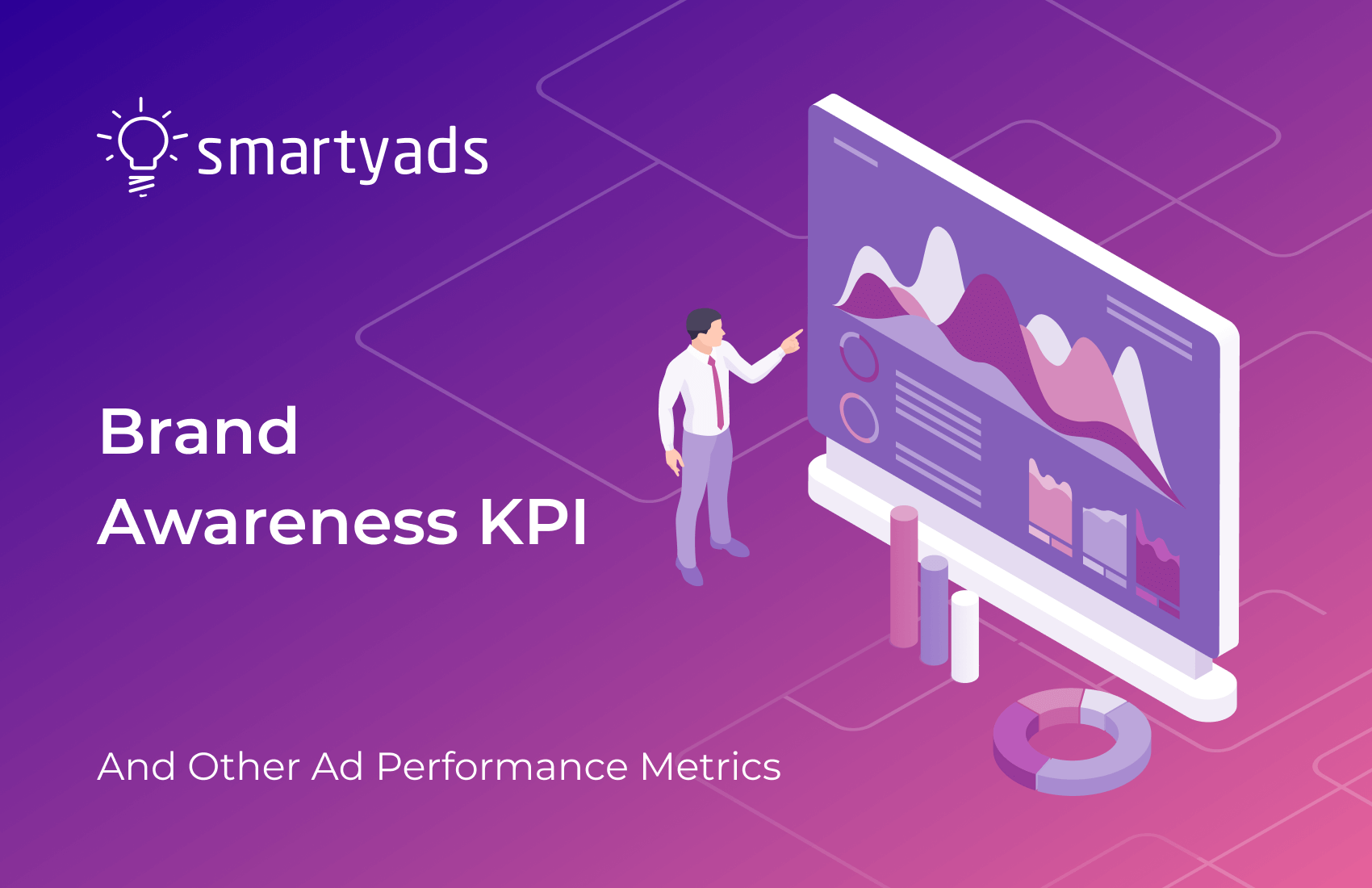Every mobile app has three main objectives. First, it has to be relevant and interesting to the users and live up to their expectations in terms of functionality. Second, for app developers, the application must generate revenue, and mobile gaming ads are the most common way to do this. Third, monetization of apps must bring benefits to both app developers and advertisers who promote their products or services within it.
So, how to effectively promote a new game on the market if you're a developer, or how to make your product or service stand out if you're an advertiser planning to place ads in various mobile applications? Let’s discover more about ads in video games and more.

Gaming ads forecast for 2022-2030
In-game advertising is on the rise because gaming on mobile is obviously booming: 100,000 new apps (including paid and free games) are being released every month on Google Play Store and App Store.
By the end of 2027, the number of new mobile users will increase and reach 7.7 billion.
With this, around 80% of their time people spend playing mobile games and using other apps. In 2024, $103 billion will be spent on promoting games, and by the end of 2025, expenditures could reach $131 billion.

More than 5.5 million apps are available on the App Store and a staggering 13.7 million on Google Play, and that's just in the USA! With this, In both stores, over 70% of these apps are free. Traditionally, there are more apps for Android, but revenue is higher from iOS apps.
In general, there are several budding trends in mobile gaming that we can observe in 2024 that will most likely continue during the next couple of years:
- The economic turbulences of 2023-2024 have affected users, publishers, and marketplaces. People have become more demanding, and their expectations of games have increased. Users are more cautious with their money and are not ready to immediately purchase subscriptions or spend money within apps.
- Apps apps based on AI technologies, gaming ones included, are gaining popularity.
Meanwhile, app developers are trying to increase user acquisition, user retention, and user engagement while incorporating the ad units into actual gameplay. For this, they integrate different ad formats — native, rewarded video, interstitial, banners, and others.
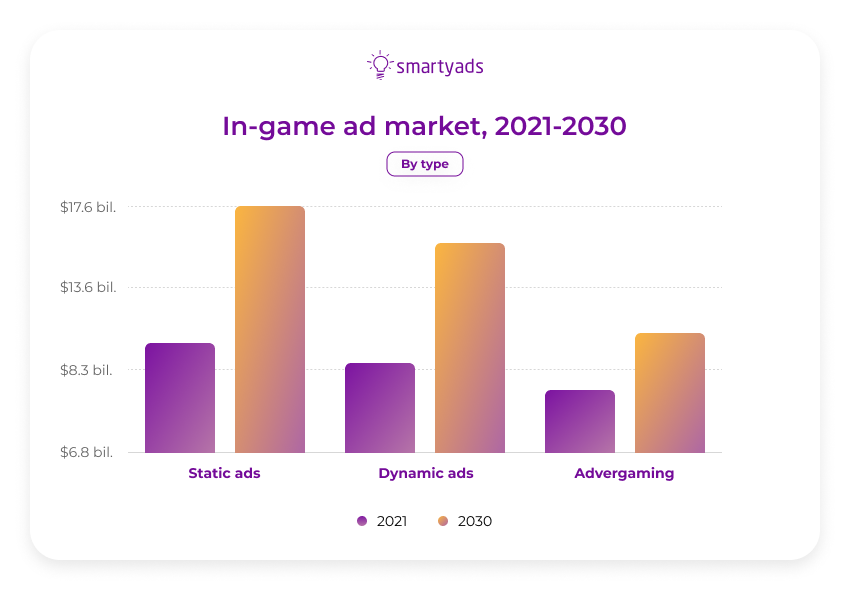
In-app advertising state in 2024
Regarding the general in-app advertising state, The App Discovery and Monetization (insights published in Business Wire), showed that mobile ads are still very popular across various genres of apps.
74% of users watch commercials (especially in-game ads) and as a result, discover new apps. Mobile game advertising will most likely reach $17.6 billion by 2030. Therefore, different ads for mobile games will be popular soon — as seen from the picture, static in-game units, dynamic in-game ads (like videos), and advergaming will progressively grow till 2030.
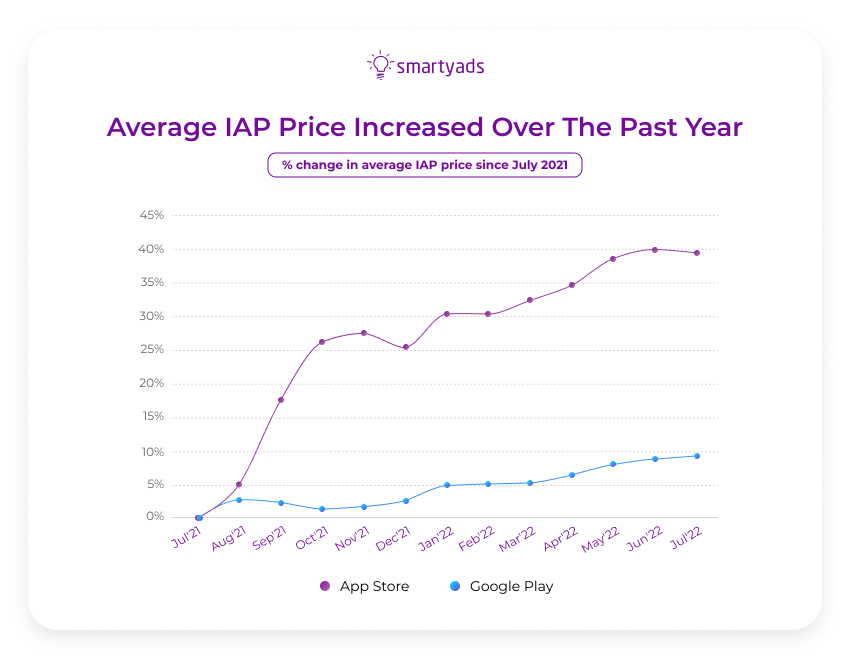 In particular, now trends are driven by hyper-casual and cross-platform games:
In particular, now trends are driven by hyper-casual and cross-platform games:
Hyper-casual games remain the leaders in the industry, dominating the download charts in the United States for several years in a row. Known for their lightweight design and instant playability, games like Block Blast and Royal Match are available on a wide range of devices.
Puzzle games have made a creative leap, adding layers of gameplay and narrative elements to attract a broader audience. This development is a response to the challenge of standing out in a saturated market dominated by giants like Candy Crush.
The emergence of Google Play Games for PC confirms the growing popularity of cross-platform gaming. This beta service, launched in 2024, allows players to play their favorite Google Play games on Windows computers. It supports game continuity across different devices, providing synchronization and progress saving.
Additionally, the latest legal proceedings between Epic v. Apple, have compelled major app stores to allow developers to sell apps that work across different platforms. This opens up new opportunities for developers to monetize their apps with lower commissions and more payment options.
In-game advertising for app publishers, game developers, and advertisers
Since market competition is extremely high, it is hard to gain money from selling a game or through in-app purchases (to monetize your own games). That's why developers are looking for alternative ways to monetize their apps, and for this, they often choose ads for games.
In this case, they act like third-party apps that serve ad commercials of other advertisers and gain ad revenue for this. At the same time, as an advertiser, you can also reap benefits from placing ads in different apps that don’t belong to you. Let’s find out how each party can organize this process.
Promote your game in other apps
For the developer, advertising can turn into an effective tool for monetizing in-game content and obtaining ad revenue. Additionally, game developers can act as advertisers and promote their gaming apps while using the ad platform.
This way, the app will be advertised in other games (of other third-party developers). The users will see mini gameplay or a demo of a game and then click on the ad button to initiate the app download (or transition to the app store).
Choose specific gaming ad formats
It’s easy to get lost while selecting between static and dynamic ad formats since gaming apps can support simple banners and media-rich formats. However, if you promote another game, it’s hard to find a better ad format than playable or rewarded videos to drive user engagement and interest. At the same time, most common game app ads, e.g. like static banners, can be supported virtually on any screen, which translates into better reach for advertisers.
Expand your reach to the maximum
For the advertiser who wants to advertise in third-party mobile gaming apps, it will be an outstanding opportunity to target users in other apps (not only gaming ones). When you advertise only in one app, your reach is quite limited; however, when you register at advertising platform like DSP, it means you can launch ad impressions in virtually any app that has available ad placements for it.
What’s also important, on such platforms, you can apply filter lists and white lists to exclude some apps from targeting or to aim only for certain apps that you prefer.
Don’t irritate gaming users
Don’t follow the temptation to show as many ads as possible to the same user, as it will cause irritation instead of loyalty. Configure advertising frequency so that each user sees your ad a couple of times throughout the day. Additionally, it will save your ad budget as impressions will be distributed evenly throughout the campaign.
Craft immersive creatives
It’s easy to fall into the misconception that an automated ad platform is the solution of its own, but it’s important to remember that creative itself can define 70% of ad campaign success. Needless to say, it should be well-thought-out, with a clear message and call to action.
The best ad will evoke emotions in the audience, prompting them to download your app (in case you are an app developer).

Let's go ahead and find out what kinds of popular mobile game ads will be commonly used in the industry and how to use them in order to protect and even enhance a typical user's gaming experience.
Advertising in free-to-play and freemium game apps
Freemium is a classic try-and-buy model when a user downloads a game for free, and then has the opportunity to buy the full version for it. It can be implemented across different genres.
Free-to-play is the most popular model among social games, and gamers like it a lot. It is also free, but along the way, the user must make in-app purchases to access new opportunities and privileges.
You can season user experience with an ad so that it indicates the path that leads to the upgrade.
Another great practice is giving the user an option to play games without ads (for a small fee) or integrate rewarded ads that help to gain in-game bonuses in exchange for ad-watching (extra lives, providing access to in-game currency, etc.).
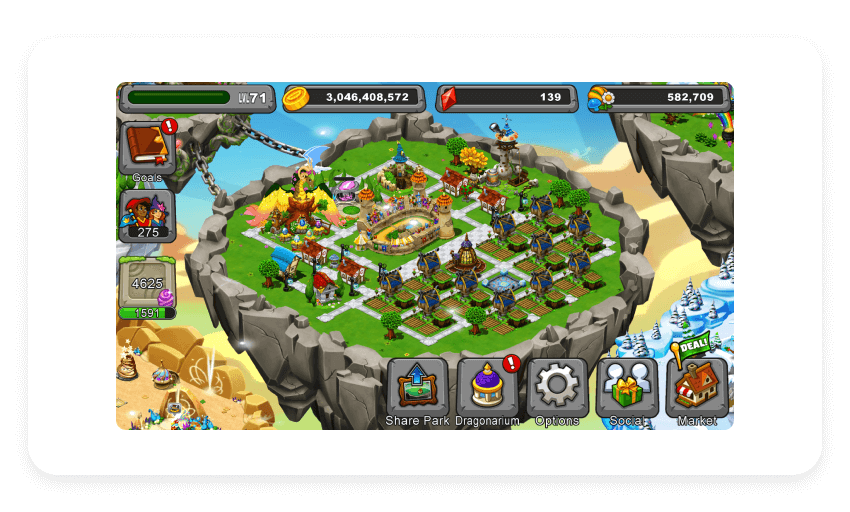
Dynamic or static experience?
If you're looking for the answer to the “What's better, dynamic or static mobile advertisement?” question, there's no simple solution. The most important idea here is to abstain from using bad mobile game ads with fake gameplay (described below).
The prices for dynamic and static ad units and the tasks they perform can be drastically different. While interactive solutions like rewarded video ads are well suited for promoting complex products, e.g., new apps (playable ads), traditional static ads are more suitable for something more common.
Both static and dynamic ads can coexist quite well and even work in a single app (depending on the session length).
Interactive mobile ad formats can be used as bait, and traditional banners as a destination this bait leads to. For example, users play rewarded ads, and, when the gameplays are over, they see the banners with a CTA — "download this game now". They click on the banner and end up in the store.
In order to make the user experience seamless and streamlined, app developers need to carefully plan each interaction of the user with static or dynamic creative. For example, an in-game advertising ad can be placed at natural pauses.
Well-organized in-game advertising doesn't irritate users, on the contrary, it can even boost the entire game experience, as those users who are not ready to pay, will watch commercials to earn in-game bonuses they need (see rewarded video or rewarded units).
The most popular dynamic units in 2024 are playable, rewarded ads, in-game videos, and advergaming. Game banners will still be among the leading static formats along with static info bites that you can find displayed on the billboards in games (see below).

Most trending online game ads
Playable ads
Playable is one of the most popular game ad units normally placed across strategy games and other genres. The playable game ad suits well both IOS and Android platforms. In a nutshell, this game ad features a mini version of another gaming app that the user can test drive in several seconds.
It motivates the audience to interact with a featured button, "try the gameplay." At the end of the gameplay, a call to action appears — “install the app in the AppStore or Google Play.” Users acquainted with the gameplay want to continue playing in the full version and click to download the app.
Playable videos are proven to deliver eight times better performance than usual ads. They will remain to be increasingly popular in 2024 because they are engaging.
If your users ask, "Why are mobile game ads so bad?” That’s only because you used a fake gameplay experience, which you need to avoid (read about fake gameplay ads below).

Rewarded ads
Rewarded ad is another star of in-game advertising for the years to come. The rewarded video ads look natural in the app's content and can be embedded in various functional parts of the game menu.
These online units reward players in exchange for ad-watching. An extra life, a hint, additional items, and functionalities are just a handful of incentives that developers can apply as bonuses.
Rewarded video doesn’t distract users from gameplay and provide additional values. For this reason rewarded ads normally generate much better user loyalty, engagement, and eCPMs on a $30+ level. Plus, rewarded ads can increase in average revenue received per user by up to 40%.
In order to correctly integrate a rewarded video into the gameplay, the developer should allocate the placements where ads will irritate users the least. Some developers also create a whole menu section where rewarded videos can be found.
According to the stats, a rewarded video has grown on both platforms, IOS and Android, although banners still remain popular because they have the best reach and are suitable for all kinds of apps.
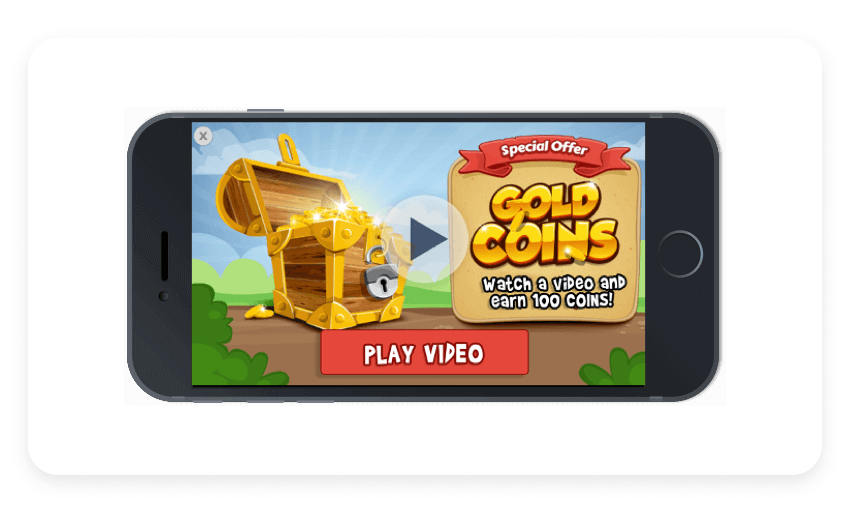
Native ads
Unlike rewarded video ad units, natives are pretty universal for all kinds of apps, non-gaming too.
IAB's Native Advertising Playbook identifies six main interactive formats that are currently used in native advertising.
The native banner has several reasons to be the most popular one. Typically, the task of the native teaser is to attract attention and encourage the user to click and follow the advertising landing in detail.
Native ads may look like any other functional element of an app. Native ad units are usually non-intrusive and generate 20–60% better engagement indexes than other formats.
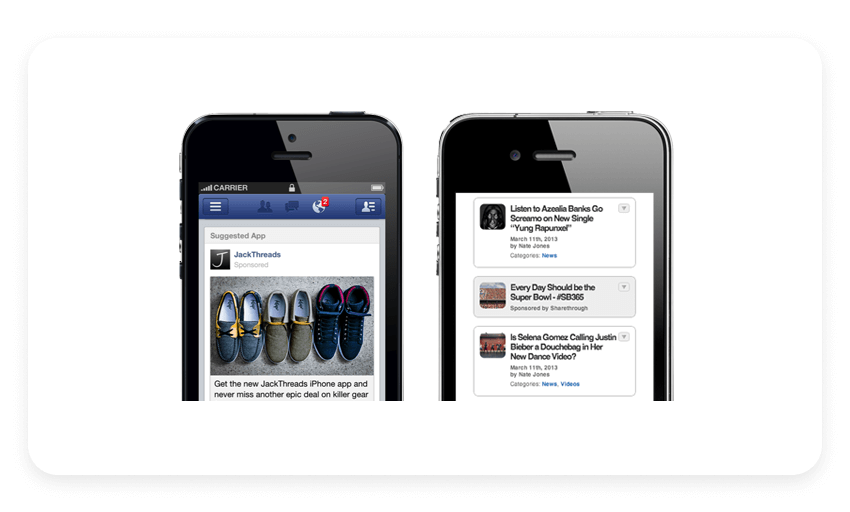
In-game video ads (interstitial ads)
Apart from playable and rewarded ads, popular in-game ads include simple videos (especially when it comes to interstitial ad commercials).
Unlike traditional static advertising formats, dynamic video game ads have a full-fledged scenario according to which they unfold. Thus, interstitials can work according to the entire scenario.
This scenario combines visual, audio, and textual types of information, which interact with users at several perception levels at the same time. Interstitial ads are full-screen formats that must be shown either at the start of the game or after some logical intervals (e.g transition to the new game level).
Normally, interstitials are the third most popular option after rewarded and playables. Over 63% of publishers monetize their casual/hyper-casual games with interstitials.
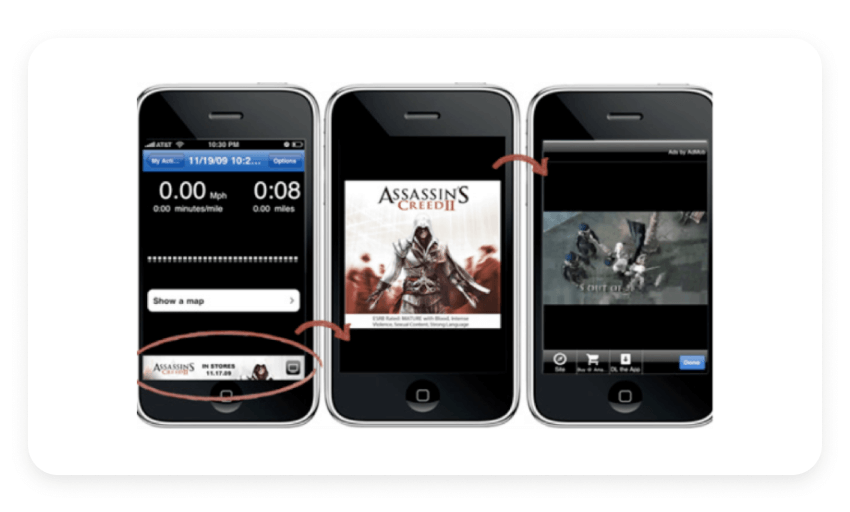
Advergaming
The concept of advergaming is relatively new but is innovative and thus, can elevate your in-game ad results. The idea behind it is to wrap around promoting the whole application experience.
Such ads are the most expensive because they are typically developed from scratch in order to show products and services in detail. So, the marketing manager should take the cost of this advertising into account.
Another, more affordable option of advergaming is when the company pays for placing the ad inside of the already well-known commercial game. Thus, for example, Chupa Chups advertises across a variety of games, including Angry Birds and Amiga Zool. This could be a more affordable way to reach your target audience.
If you don’t want to craft weird mobile game ads with advergaming, remember to attract professionals as this format requires a lot of designing skills.
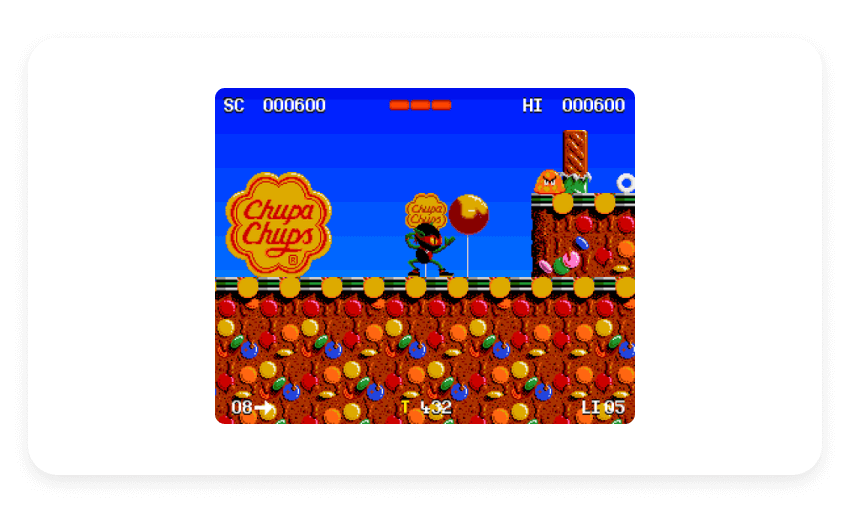
Offerwall
Offerwall is an in-game ad that resembles a rewarded video: the user is offered to install another application, participate in a survey, or perform any action in exchange for an in-game bonus. Today, this format is less popular than rewarded and playable; offerwalls are also restricted by Apple, as those ad units are often considered manipulative.
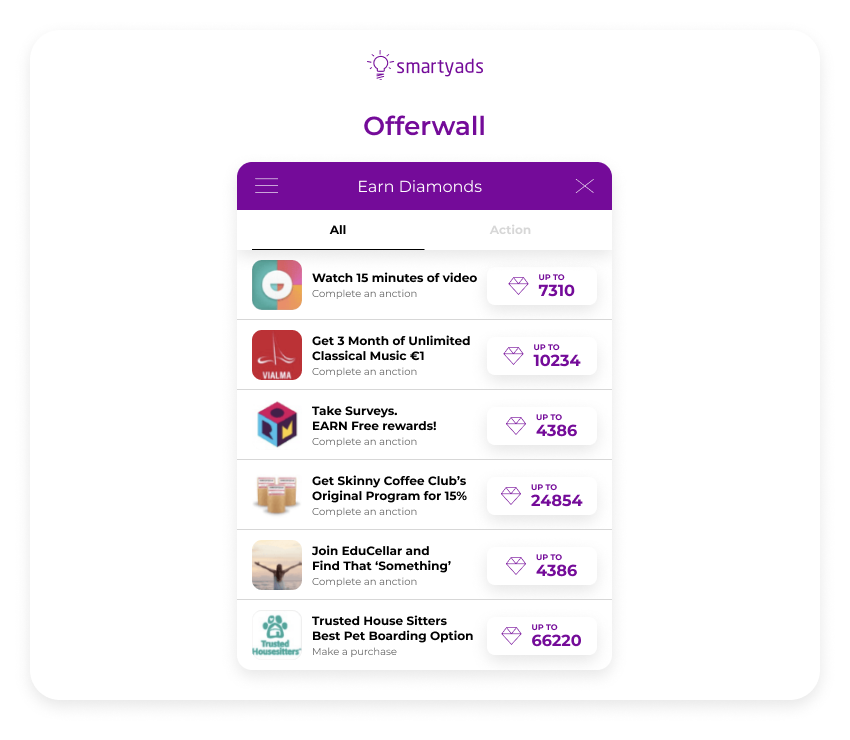
Where to place a mobile game ad?
So where should you place your ad in order to effectively reach the right users?
Action games
In such games as Brawlhalla, Mortal Kombat, and Walking Dead, the progress may largely depend on the player: reaction speed, being quick and agile. Thus, rewarded ads can be a really great choice for this category, as the user will certainly want to get new items in the game and increase their in-game rank.
Arcades
In this gaming niche (PacMan, Doodle Jump, Subway Surfers, and Monster Dashgenre), as a rule, there is no plot. The player has "lives" to complete tasks in levels, and the logic for accomplishing tasks is fairly straightforward. In this case, the full-screen banners can be your universal choice. As an advertiser, you can use rewarded ads to offer extra lives in arcade games, as well.
Battles
This niche is known by PUBG, Fortnite, Call of Duty Mobile, Brawl Stars, and other multiplayer survivals, and also shooters; rewarded and playable ads will be the best choice.
Casual games
This niche is represented by Bloons TD, Stack, Crossy Road, and similar ones. Here you can use full-screen banners. These games are usually pretty relaxed and don't require extensive time for skill learning.
Multiplayer Online Battle Arena
MOBA (Multiplayer Online Battle Arena) is represented by Vainglory, Mobile Legends, and Arena of Valor where teams of players compete in the arena. You can use the format of full-screen banners and rewarded ads.
Puzzles
In such game niche (Two Dots, Move the Block, and Sudoku), full-screen banners are used most frequently (during the transition between the levels). These games are common and easy to play but they require applying intellectual abilities. Games like Wordscapes, Four Letters, and Wheel of Fortune can also be attributed to this niche.
Sports games
Sports advertising is on the rise and so is proliferation of sports games into the mobile niche. These ones imitate sports from real life: football, basketball, and others. Examples of such games include FIFA and Golf Star. The rewarded and playable ad formats are the most common here.
Remember that each of these types requires commercials to organically fit in without misleading practices. This way, your users won’t wonder why do mobile game ads lie. For this reason, abstain from creating fake gameplay creatives no matter what genre you are working with.
Game ad: testing and deploying
One of the main downsides of the interactive ad is that it is labor-consuming. Some dynamic video ad formats may also appear more expensive as long as a media player on site occupies a large space.
In this regard, static formats will be more affordable. At the same time, the CPM of interactive formats is usually higher. Because of this, it will be better for the brand to test the static ad format along with interactive and compare their effectiveness and ability to achieve particular KPIs.
The best practice will be to test different creatives for different audience segments. The more personalized the creative is the more chances the users will react and convert.
Fake mobile game ads: avoid misleading practices
Fake ad units are advertisements that misrepresent the actual gameplay, features, or graphics of a mobile game. These ads often use exaggerated or entirely fabricated gameplay footage, misleading viewers into believing that the advertised game offers a different experience than it actually does. They may use unrelated gameplay footage from other games or showcase content that is not representative of the game being advertised.
Why advertisers use fake mobile game ads
The reason behind such techniques is simple – advertisers or app publishers that promote their game basically want to “convert” the users and make them perform certain action such as downloading. It could be also performed by the bad partner who is receiving payment for each click on download taking place at their resource.
The Federal Trade Commission (FTC) in the United States does not penalize this practice because it cannot prove that it violates provisions of existing truth-in-advertising laws. At the same time, it can harm the image of the app developer as gameplay doesn’t match the one the players tested in the ad. That’s why it is highly recommended to carefully select partners and affiliates who will be in charge of promoting your app.
Common types of fake mobile game ads
These types of ads are very common and can be divided into several popular groups:
- Bait-and-Switch. In interactive video ads, users are presented with a puzzle: to correctly remove the obstacle separating the character from danger and reward so that the hero avoids danger but receives the reward. Normally it lead users to download a completely different genre of game or even a completely unrelated app.
- Misleading titles. Mobile game ads be like: attention, your phone has tons of viruses! In 2012, the FTC accused Jesta Digital, an app developer and digital agency, of fraud due to an advertising campaign that misled users into believing their smartphones were infected with a virus.
- Fake reviews and ratings. Ads may feature fabricated reviews or ratings from supposed users praising the game's quality or addictiveness.
- False gameplay footage. These ads showcase gameplay footage that is entirely unrelated to the actual game being advertised. They may feature high-quality graphics, intense action, or exciting scenarios that are not representative of the game's actual gameplay.
Fake mobile game ads examples
These tactics aim to deceive users into downloading the advertised app by presenting it in a more appealing or exciting light than it truly is. Below you can see some examples of those that we’ve counted above:
Puzzle fake ad:
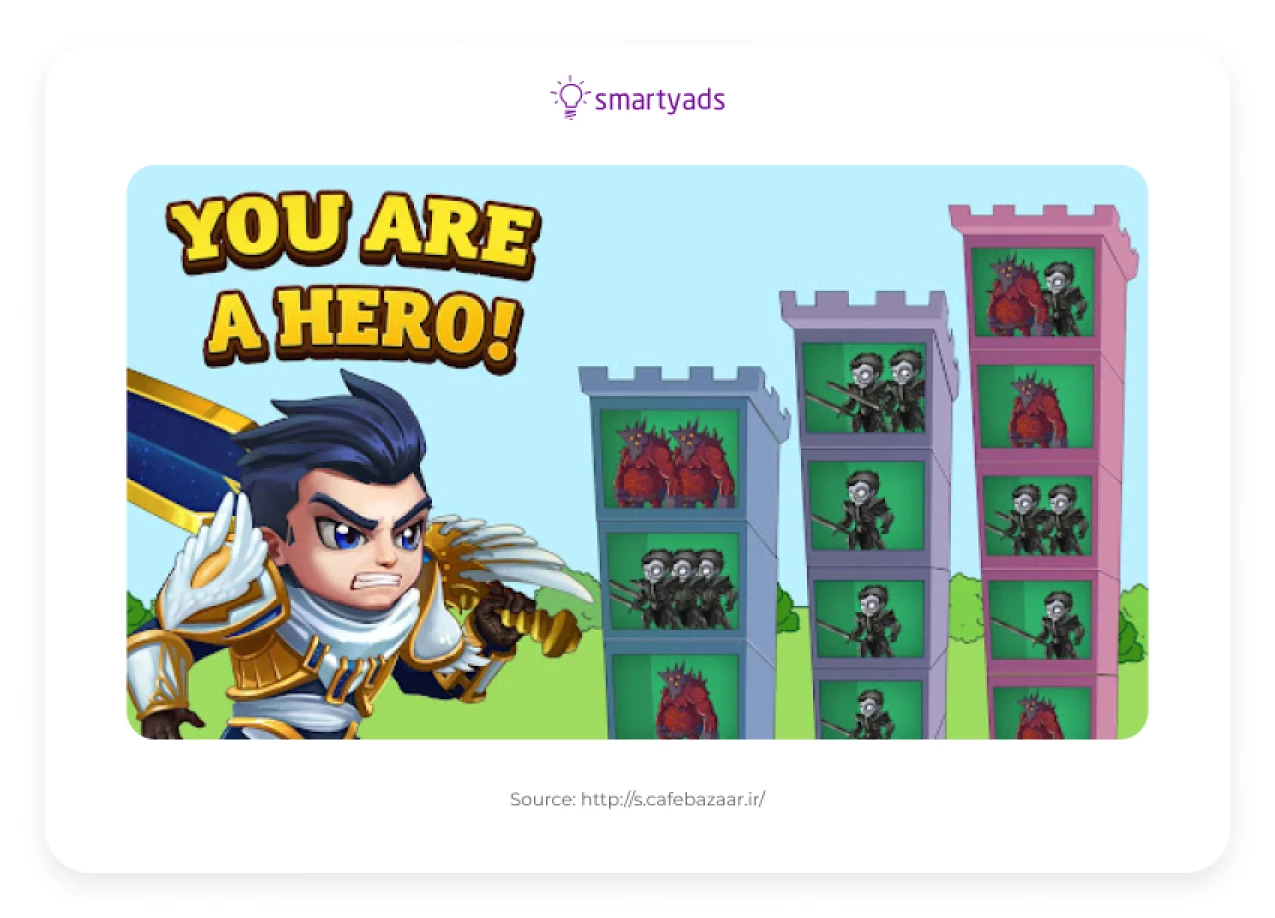
Ad with misleading information:
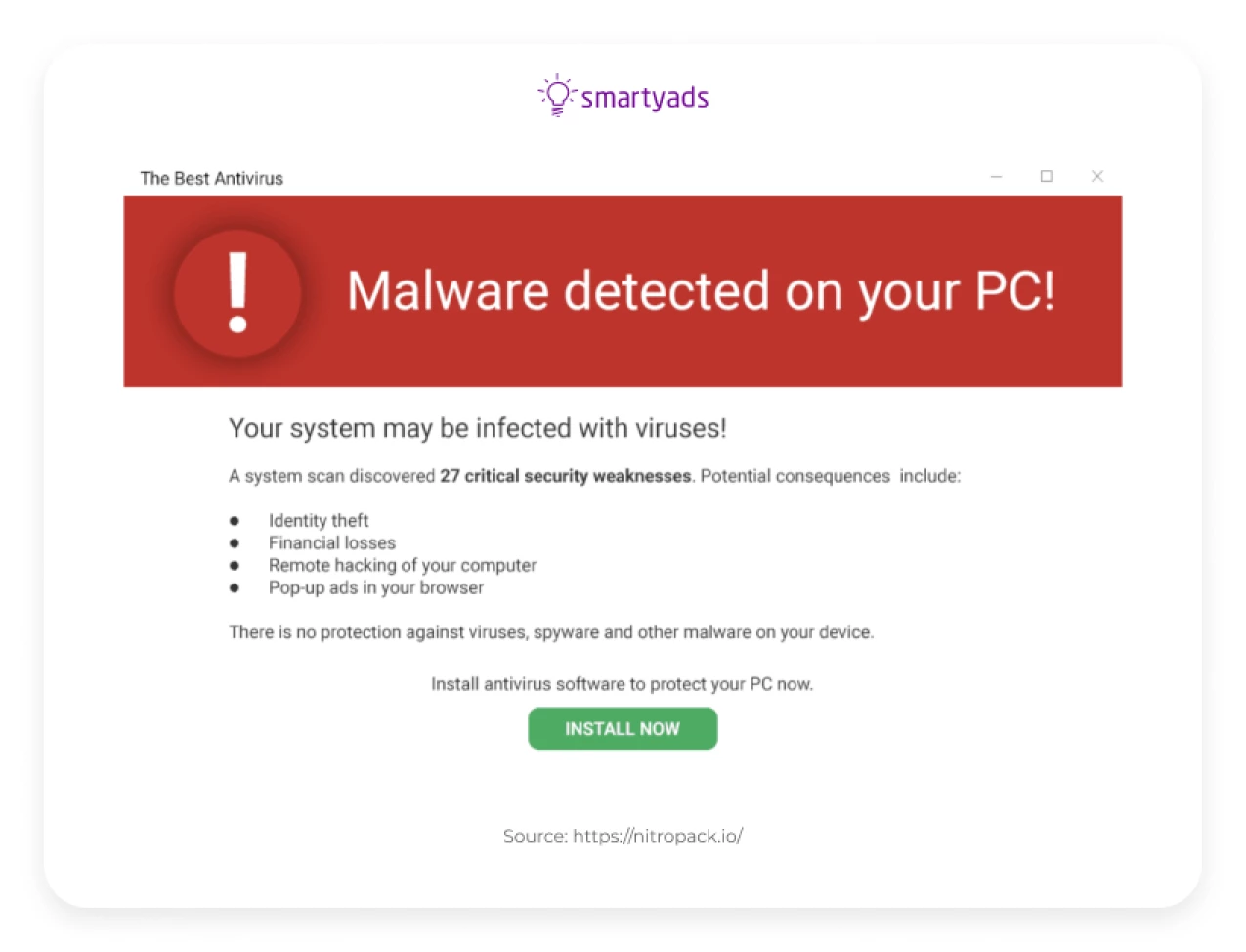
Fake reviews:

False gameplay footage:
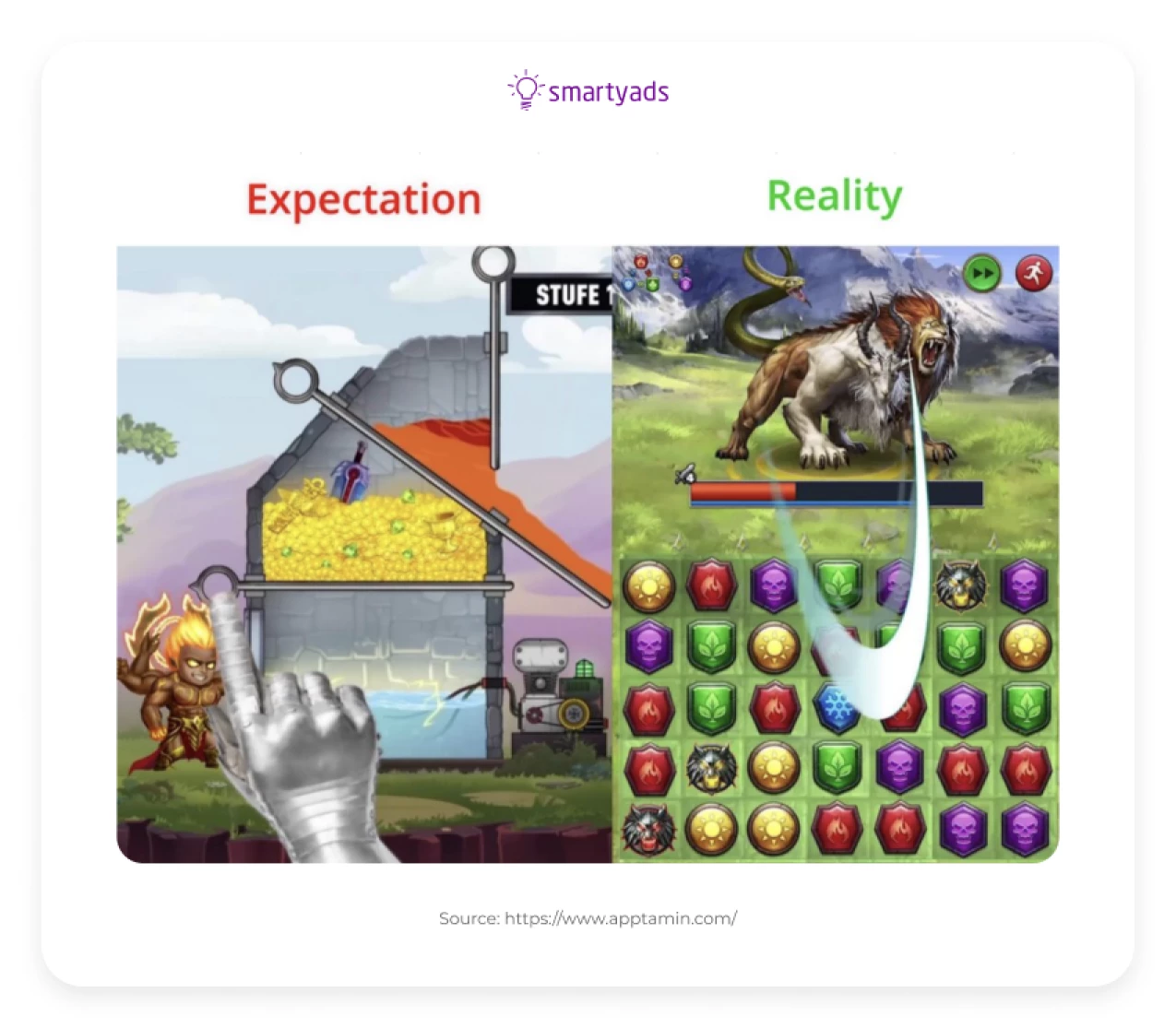
Helping your in-game ads find the right users
It's also hard to underestimate the significance of ad personalization for remaining a good game experience. Ad personalization is a reason why advertisers and app developers chose a programmatic demand-side platform.
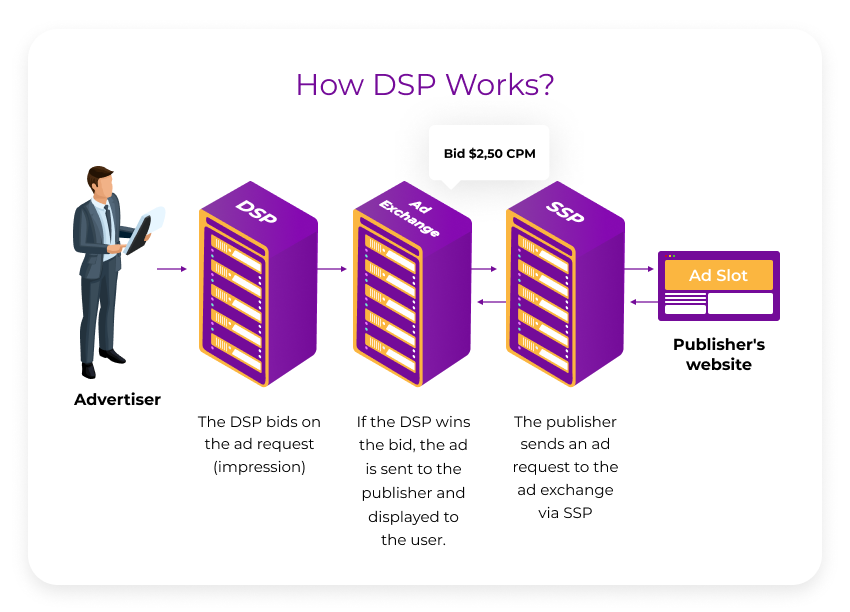
Such platforms connect publishers with global advertisers in real-time due to which publishers earn money from ad serving, and advertisers address custom audiences in any corner of the world.
On SmartyAds DSP advertisers can choose from a variety of mobile gaming ads, including banner, playable, rewarded, interstitial, and native ones.
Thanks to programmatic DSP's precise targeting and automation, advertisers can aim precisely and reach only those audiences to whom their product or service will be relevant (the ad platform allows the ad to be channeled according to age range, geo, device type, and other targeting criteria).
With this, the bidding process will happen automatically and the system will select only the most suitable sources for ad placement with the most optimized price.
Apply the most innovative tools of in-app advertising on SmartyAds DSP. Register now!

